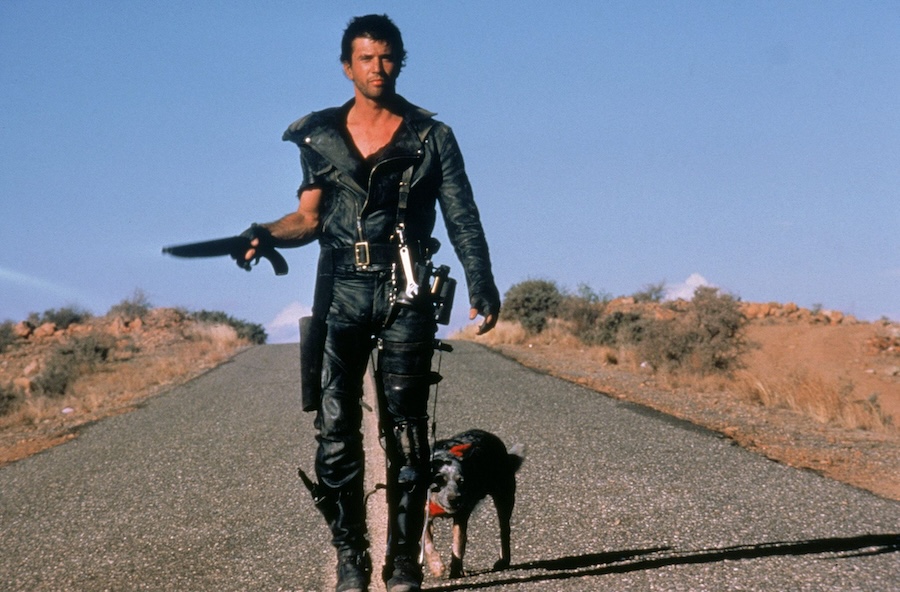
WHEN ALL THAT’S LEFT IS ONE LAST CHANCE, PRAY THAT HE’S STILL OUT THERE… SOMEWHERE!

Mad Max (1979) has been described as a key film in the Australian New Wave. Heavily debated because of the violence, it was recognized internationally as an influential dystopian vigilante piece. The director, George Miller, never had any intention to make a sequel, but as his star rose he started thinking that revisiting the genre with the help of a greater budget might be interesting. The first cut was so bloody that Australian censors took out whole scenes from it. Still, they left intact what mattered for the subsequent success of the film – its atmosphere and car chases.
No gasoline, no law and order
After the events in the first film, the world has gone to hell a little bit more. There are almost no reserves of gasoline left, and no law and order. Former cop Max Rockatansky (Mel Gibson) is now a drifter, having lost everything but his supercharged V-8 Pursuit Special, a dog and a sawn-off shotgun. After being ambushed by a a man called the Gyro Captain (Bruce Spence), Max overpowers him and the man takes him to an oil refinery that is under siege by a gang of criminals (led by Humungus (Kjell Nilsson)) in desperate need of fuel.
Max finds a way to get inside the refinery and tries to make a deal that will give him a tank of fuel, but the leader of the refinery reneges. With Humungus a constant threat, Max offers the people at the compound a different deal…
Influenced by Kurosawa
The first film was never a big hit in the U.S., which is why the second part got a different title, The Road Warrior. Following the success of the sequel, Mad Max was rereleased in America and advertised as a “prequel” to The Road Warrior. The story is a bit less complicated here, but still showing a society that has degenerated to an alarming degree because of an energy crisis; certainly a relevant warning for the future at a time when renewables were seen as a quaint idea. Miller was reportedly influenced by Akira Kurosawa, but it’s even easier to go one step further and spot some Star Wars (1977), complete with “wipes” in the editing, a desert landscape that might as well be Tatooine, and Max himself turning into a wisecracking hero in the mould of Han Solo (with his car standing in for the Millennium Falcon).
The sequel is less obviously low-budget Australian in tone, looking like it exists in its own desolate universe.
Others will view this film as a Western, with Gibson as a gunslinger defending a group of benign strangers against cruel villains where the final showdown arrives not in the shape of a shootout but a wild chase involving all kinds of dirty, fast makeshift vehicles. That part has even wilder stunts than the original, which is perhaps one reason why American audiences finally took notice. Another reason is probably that the sequel is less obviously low-budget Australian in tone, looking like it exists in its own desolate universe. As for the music, in my review of Mad Max I criticized Brian May’s work as sounding too much like a 1940s melodrama; this time he seems to have been inspired by John Williams, with pleasing results.
It’s been fun reviewing this franchise ahead of the premiere of the heavily anticipated fourth film, Mad Max: Fury Road. Right now, this second one stands as the best. But the fact that I’ve been highlighting all its nods to superior Westerns and sci-fi movies is my way of telling you that Mad Max 2 appearing on best-ever lists is something I find a bit too generous.
Mad Max 2 1981-Australia. 94 min. Color. Widescreen. Directed by George Miller. Screenplay: George Miller, Terry Hayes, Brian Hannant. Cinematography: Dean Semler. Music: Brian May. Cast: Mel Gibson (Max Rockatansky), Bruce Spence (Gyro Captain), Vernon Wells (Wez), Mike Preston, Virginia Hey, Emil Minty.
Trivia: Followed by Mad Max Beyond Thunderdome (1985).
Last word: “On Mad Max 2 (1981), I made a point of getting really the best possible crew we could find. We were going to be out in the desert at Broken Hill. It was going to be tough. We were going to try to push things a little bit and, you know, I … but the attitude that I had and I think that the crew had was vastly different. On the first one most of the crew had come out of Crawford’s Television. They couldn’t work out why – why we were trying to shoot the film in an atypical way. They thought we were just going to make a Crawford’s cop show. But we … but by the time we got to Mad Max 2 (1981), I think this was Dean Semler’s second feature and his attitude was give anything a go – it’s crazy but give it a go, we’ll back you all the way.” (Miller, Australian Screen)
